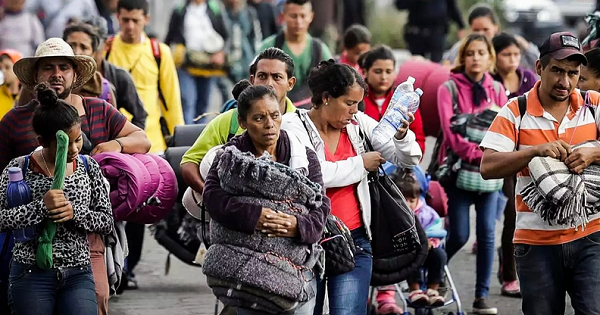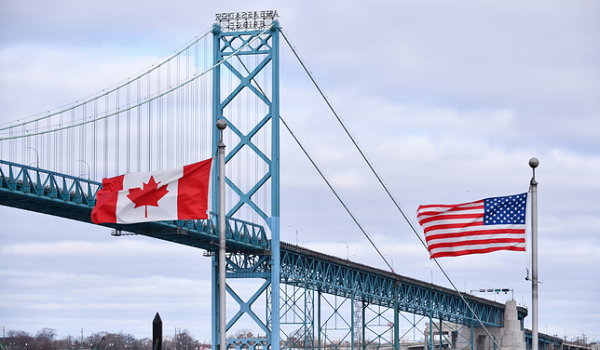Trying to ‘buy Canadian’ may not be as easy as it sounds, experts warn
Daniel Naraine built his grocery store, with a simple mission: to support local food entrepreneurs.
Since launching in 2021, the Toronto-based ‘City Cottage Market’ on Kingston Road near Birchmount Road has focused on stocking homegrown, Canadian-made products to help small businesses thrive.
Every once in a while, they bring in “special items and brands” from outside Canada such as Bianco DiNapoli tomatoes & pizzas sauces which are grown and harvested in Northern California.
But for the most part, their focus is on Canadian goods which make up more than 90 per cent of the store, Naraine estimates. He says he’s seen a real interest in supporting local in the face of threatened tariffs from U.S. President Donald Trump.
“I think there’s some positivity around this,” he told CTV News in an interview. “I’m seeing today a lot of local companies posting what percentage of their stock is Canadian right now, and that’s proving to be a pretty positive impact.”
Naraine says the beauty of buying “hyper-local” is that he can purchase the bare minimum from suppliers to “test out” Canadian products with customers.
But as tariffs loom and consumers rally behind “buying Canadian,” experts warn that doing so is not always as simple as it sounds.
“In food and agrifood, that product could have crossed the border twice or three times in value-added development,” said Ron Lemaire, president of the Canadian Produce Marketing Association. “Buying only Canadian creates challenges due to the lack of diversity of production that we have in Canada,” he said.
Trump agreed to a 30-day pause on planned tariffs on Canadian goods earlier this week but the measure could still take effect as early as March 4.
The looming tariffs have prompted the City of Toronto to begin work on a “buy local” campaign that will encourage residents to join the city government in eschewing U.S. goods.
But what does ‘buying local’ really mean?
The complexities of ‘buying Canadian’:
Even when products are marketed as “Canadian,” they often rely on supply chains that stretch across North America.
Under federal guidelines, only items with at least 98 per cent of production costs occurring in Canada qualify as a “Product of Canada.”
A “Made in Canada” label requires just 51 per cent Canadian content.
Lemaire says due to Canada’s growing season, climate, and limited agricultural output, the sole reliance on Canadian goods is ‘notably unrealistic.’
“We don’t grow citrus. We rely on California, Morocco, Egypt, Spain, South America at different times of the year… To change those trading routes right now, that takes 18 to 30 days of transport unless you’re going air freight, and then you’re driving costs up to a point that’s not cost-effective for the consumer,” he said.
Another challenge he adds is that many Canadian food producers operate on both sides of the border.
“You may have meat that’s slaughtered in the U.S. but processed in Canada and shipped back to the U.S.,” Lemaire explained. “All of these dynamics create a very complex system. So, when you say something is Canadian, well, it could have been a Canadian cow going to the U.S., being slaughtered there, and then shipped back to Canada.”
The modern cost of going local
Despite the tariff threats, Naraine says City Cottage Market is “flourishing” as consumers increasingly look for Canadian alternatives.
“Our local community have come out in droves to make sure their putting that extra dollar back into the local economy as well as the local makers,” he said in an interview with CP24 Breakfast.
However, he acknowledges that locally made goods often come with higher price tags. Though he cautions against price gauging customers, many of his products are made in test kitchens in Toronto.
He adds that nothing in his store is going waste and that when products are nearing their expiration date, he takes them to the local food bank to help out those less fortunate.
“If you invest into the community you live in, that will help it flourish,” he said. “Loblaws will still be busy but what we want to see is the strip that we’re on busy eight hours of the day.”
‘Leafy greens’ could be one of the first to rise in cost
Currently, about 85 per cent of Ontario’s greenhouse is shipped to the U.S., Lemarie says.
With a potential trade war in just a few weeks, Lemarie estimates leafy greens could be one of the first grocery items to rise in cost due to disrupted supply chains.
“When we look at leafy green programs coming into Canada, bag salad programs, those are California based programs that really drive change,” he said, adding that the industry is very price sensitive.
“I hate to say it, California’s citrus program, which is five days drive away from Canada, is a model that is cost appropriate at the time of production. We need to make sure whatever change we’re looking at doesn’t drive up costs unnecessarily for the Canadian public.”
What happens next?
For now, Canada and the U.S. have delayed the tariffs and retaliatory tariffs for only three more weeks, after a phone call between Prime Minister Justin Trudeau and President Donald Trump.
Yet uncertainty remains.
Lemaire says if tariffs are enacted on March 4, grocery prices will rise quickly, particularly for leafy greens or anything in the greenhouse industry.
“Without any tariffs on Canadian product going south, returns to growers, shipping to the U.S. could be higher than returns domestically,” he said. “Asking growers to sell all their products in Canada may be detrimental to the sustainability of their operation.”
Lemaire believes this situation has exposed the fragile nature of food supply chains in North America.
“Whether tariffs do happen in 30 days, or they don’t, I think this is a wake-up call for North America on the importance of our long-standing relationship on trade and food security,” he said.
This article was first reported by CTV News












